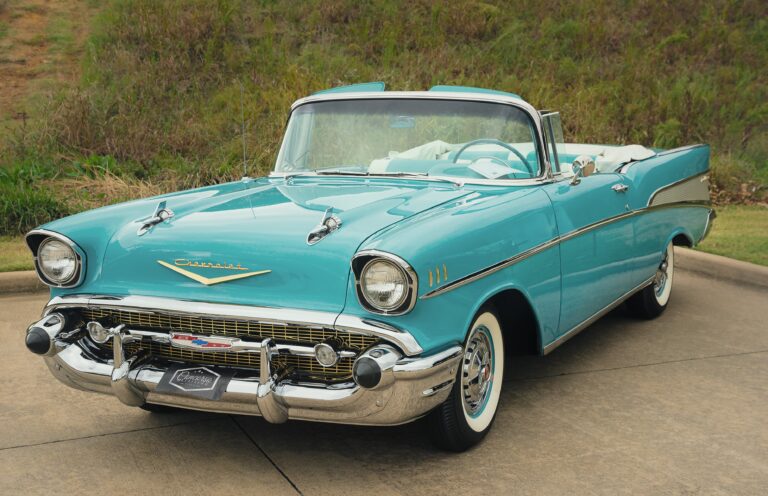Inside A Food Truck: The Heartbeat of Mobile Culinary Innovation
Inside A Food Truck: The Heartbeat of Mobile Culinary Innovation cars.truckstrend.com
The aroma of sizzling onions, the rhythmic clang of spatulas on a griddle, the cheerful banter of cooks amidst the hum of a generator – this is the sensory symphony that defines "Inside A Food Truck." Far more than just a vehicle, a food truck is a marvel of culinary engineering, a compact command center where gastronomic dreams are brought to life on wheels. It’s a testament to efficiency, adaptability, and the entrepreneurial spirit, transforming a confined space into a bustling kitchen capable of serving hundreds. Understanding what truly goes on inside this mobile marvel is key to appreciating its unique challenges, ingenious solutions, and the sheer dedication required to operate one successfully.
For the aspiring food entrepreneur, the seasoned chef, or simply the curious foodie, peering into the operational heart of a food truck reveals a world of meticulously planned layouts, rigorous health standards, and a demanding yet rewarding work environment. This article delves deep into the inner workings of a food truck, exploring its design, operational flow, the human element, and the critical factors that ensure its success.
Inside A Food Truck: The Heartbeat of Mobile Culinary Innovation
1. The Compact Command Center: Layout and Design Philosophy
Step inside a food truck, and you immediately notice the ingenious use of every available inch. This isn’t just a kitchen; it’s a meticulously planned ergonomic system designed for maximum output in minimal space. The fundamental principle governing its layout is workflow efficiency: minimizing movement and maximizing productivity.
- Essential Equipment: At its core, a food truck houses commercial-grade equipment scaled down for mobility. This typically includes a flat-top griddle, deep fryers, a multi-burner range, an oven (often convection), and robust refrigeration units (under-counter or reach-in coolers/freezers). A critical component is the ventilation system, featuring a powerful exhaust hood and fan to manage heat, smoke, and grease.
- Workflow Design: Most trucks follow a linear or L-shaped workflow: cold storage leads to prep areas, which flow into the cooking line, and finally to the serving window. This logical progression prevents cross-contamination and streamlines order fulfillment. Sinks (three-compartment for washing, rinsing, sanitizing, plus a separate handwashing sink) are strategically placed for easy access and compliance.
- Storage Solutions: Given the limited footprint, vertical storage, wall-mounted shelving, and under-counter compartments are utilized to store dry goods, smallwares, and cleaning supplies. Every drawer, cabinet, and nook is designed with purpose.
- Ergonomics and Durability: Stainless steel surfaces are standard for durability, hygiene, and ease of cleaning. Non-slip flooring is essential for safety. The entire setup must withstand constant movement, vibrations, and varying temperatures, requiring robust construction and secure fastening of all components.

2. Orchestrating Operations in Motion: The Daily Rhythm
The interior of a food truck is a stage where a highly choreographed culinary performance unfolds daily. From the moment the engine starts to the final wipe-down, efficiency and precision are paramount.
- Pre-Service Setup: The day begins long before the first customer arrives. Inside the truck, this involves checking all equipment (propane levels, generator fuel, water tanks), stocking ingredients from off-site storage, pre-heating fryers and griddles, and setting up the point-of-sale (POS) system. Prep work, often done off-site or in the early morning, is crucial to minimize on-truck labor.
- During Service: When the window opens, the truck transforms into a high-pressure environment. Orders come in via the POS, communicated to the cook. The workflow dictates a seamless dance: ingredients are pulled from refrigeration, prepped quickly, cooked rapidly, assembled, and plated for serving. Communication between team members is constant, clear, and concise, often using shorthand or hand signals due to noise and space constraints. Speed and accuracy are vital to minimize customer wait times.
- Post-Service Breakdown: Once service concludes, the rigorous cleaning process begins. All cooking surfaces are cleaned, fryers filtered, floors swept and mopped, and sinks scrubbed. Waste (food scraps, grease, general trash) is meticulously separated and disposed of according to regulations. Equipment is powered down, and any remaining perishable ingredients are properly stored or discarded. This thorough cleaning is non-negotiable for health compliance and operational longevity.


3. Overcoming Spatial and Logistical Hurdles
The compact nature of a food truck presents unique challenges that operators must ingeniously overcome.
- Limited Storage: Beyond the immediate operational needs, long-term storage for bulk ingredients, paper goods, and non-perishables often requires an off-site commissary kitchen or dedicated storage unit. This adds a layer of logistical planning.
- Utility Management: Power is typically supplied by a generator (propane or diesel) or shore power when parked at an event with electrical hookups. Water is stored in fresh water tanks, with used "grey water" collected in separate tanks that must be emptied regularly at approved dumping stations. Propane tanks fuel cooking equipment and sometimes generators, requiring careful monitoring and regular refills. Managing these utilities is a constant balancing act to ensure uninterrupted service.
- Ventilation and Temperature Control: Despite powerful exhaust hoods, food trucks can become incredibly hot, especially during peak service. Effective ventilation is crucial for worker comfort and safety, dissipating heat, steam, and cooking odors. Some trucks incorporate small air conditioning units, though their power demands can be significant.
- Waste Management: Beyond general trash, grease waste from fryers and cooking surfaces requires special disposal through licensed rendering companies. Grey water disposal also requires adherence to environmental regulations.
4. Health, Safety, and Regulatory Compliance
Operating inside a food truck means adhering to a stringent set of health and safety regulations, which are often more complex due to the mobile nature of the business.
- Health Department Requirements: These vary by municipality but generally include specific requirements for materials (food-grade stainless steel), minimum number and types of sinks (three-compartment for washing dishes, separate handwashing sink), hot and cold running water, proper waste disposal, pest control, and strict temperature control for all food items. Regular inspections are mandatory.
- Fire Safety: Given the presence of open flames, hot oil, and propane, fire safety is paramount. Trucks are required to have appropriate fire extinguishers (Class K for kitchen fires) and often an integrated fire suppression system that automatically deploys a chemical agent in case of a blaze. Propane tanks must be secured and regularly inspected.
- Worker Safety: The confined, fast-paced environment poses risks. Non-slip flooring, clear pathways, proper lifting techniques, and training on equipment operation are essential to prevent slips, burns, cuts, and other injuries. Adequate lighting ensures visibility.
5. Technology and Efficiency: Smart Solutions for Small Spaces
Modern food trucks leverage technology to enhance efficiency, customer experience, and operational control.
- Mobile POS Systems: Tablet-based POS systems are ubiquitous, allowing for quick order entry, payment processing (including contactless), inventory tracking, and sales reporting. Many integrate with kitchen display systems (KDS) for seamless order communication to the cook.
- Specialized Compact Equipment: Manufacturers design specific equipment for food trucks, prioritizing smaller footprints, lower power consumption, and multi-functionality. This includes compact fryers, induction cooktops, and combination ovens.
- Connectivity: Reliable internet access (via cellular hotspots) is vital for POS systems, online orders, and social media engagement, ensuring the truck remains connected to its customer base.
- Inventory Management Software: Integrating inventory with the POS helps track ingredient usage, minimize waste, and streamline ordering, directly impacting profitability.
6. The Human Element: Working in Close Quarters
Perhaps the most defining aspect of "inside a food truck" is the human dynamic. Operating in such close quarters demands a unique set of skills and a strong team spirit.
- Team Size and Roles: Most food trucks operate with a lean team, often 1-3 people. Roles are fluid, requiring cross-training. One person might take orders and serve, while another cooks, and a third handles prep and dishwashing.
- Communication is Key: With limited space and the noise of equipment, clear, concise communication is absolutely vital to avoid errors, maintain flow, and ensure safety.
- Adaptability and Resilience: Food truck operators face unpredictable weather, mechanical issues, unexpected crowds, and tight deadlines. The ability to adapt quickly, problem-solve on the fly, and maintain a positive attitude under pressure is crucial.
- Stress Management: The high-pressure, confined environment can be stressful. Breaks, proper hydration, and a supportive team culture are important for managing the demands of the job.
Practical Advice and Actionable Insights
For anyone considering entering the food truck industry or simply curious, here are key takeaways:
- Plan Meticulously: Before buying or building, map out your menu and desired workflow. This dictates your equipment needs and layout.
- Prioritize Health & Safety: These are non-negotiable. Understand local regulations thoroughly.
- Invest in Quality Equipment: Durable, commercial-grade equipment will save you money and headaches in the long run.
- Embrace Technology: A good POS system and efficient kitchen tech will streamline operations.
- Build a Resilient Team: The close quarters demand individuals who are flexible, communicate well, and can handle pressure.
- Master Logistics: Efficiently managing supplies, waste, and utilities is as important as cooking.
Concluding Summary
"Inside A Food Truck" is a world of calculated design, rigorous operational discipline, and unwavering passion. It’s a microcosm of the restaurant industry, condensed and made mobile, presenting unique challenges that are met with innovative solutions and tireless effort. From the strategic placement of a handwashing sink to the seamless integration of a mobile POS system, every element inside a food truck is geared towards delivering high-quality food efficiently and safely. It’s a demanding business, but for those who master the art of working within its compact confines, the food truck offers an unparalleled path to culinary entrepreneurship and direct connection with hungry customers. The true magic of the food truck lies not just in its mobility, but in the dynamic, efficient, and often surprisingly powerful kitchen it houses within.
Estimated Costs for Food Truck Interior Setup and Operation
Understanding the financial investment required for the interior setup and ongoing operation of a food truck is crucial. These are estimated ranges and can vary significantly based on location, quality of equipment, and customization.
| Category | Item/Description | Estimated Cost Range (USD) | Notes |
|---|---|---|---|
| Initial Setup (One-Time) | |||
| Truck/Trailer Conversion | Basic shell to fully equipped kitchen, including chassis | $50,000 – $150,000+ | Varies widely based on new vs. used, size, level of customization, and professional build vs. DIY. |
| Core Cooking Equipment | Griddle, fryer(s), range, oven, salamander (commercial grade) | $5,000 – $25,000 | Stainless steel, heavy-duty equipment designed for commercial use. Prices vary by brand and capacity. |
| Refrigeration | Under-counter fridges/freezers, reach-ins, cold tables | $3,000 – $12,000 | Essential for food safety and storage. Often customized to fit the space. |
| Sinks & Water System | 3-compartment sink, handwash sink, fresh & grey water tanks, water heater | $2,000 – $7,000 | Health department mandated. Includes pumps and plumbing. |
| Ventilation System | Exhaust hood, powerful fan, fire suppression system (Ansul or equivalent) | $4,000 – $15,000 | Critical for safety, air quality, and comfort. Fire suppression is usually a significant component. |
| Generator/Power System | Propane, diesel, or inverter generator, electrical wiring, outlets | $3,000 – $10,000 | Powers all electrical equipment. Size depends on total wattage required. |
| Smallwares & Utensils | Pots, pans, knives, cutting boards, serving utensils, safety equipment | $1,000 – $3,000 | Essential tools for cooking and serving. |
| Point-of-Sale (POS) System | Tablet, card reader, printer | $500 – $2,000 | Initial hardware cost; software usually has ongoing monthly fees. |
| Operational Costs (Monthly/Ongoing) | |||
| Propane/Fuel | For cooking equipment and generator | $300 – $800 | Highly dependent on operating hours, menu, and generator usage. |
| Ingredients & Supplies | Food inventory, packaging (to-go containers, napkins), cleaning supplies | $2,000 – $10,000+ | Directly proportional to sales volume and menu complexity. |
| Labor | Wages for cooks, servers (if applicable) | $1,500 – $5,000+ per employee | Can be owner-operated initially. Varies by number of staff and local minimum wage. |
| POS System/Software | Monthly subscription fees for sales tracking, inventory, reporting | $50 – $200 | Essential for efficient transactions and business management. |
| Maintenance & Repairs | Regular servicing of equipment, truck engine, unexpected repairs | $100 – $500 | Set aside a contingency fund for larger, unexpected repairs. |
| Insurance | Commercial auto, general liability, worker’s comp (if applicable) | $100 – $400 | Protects against accidents, damage, and liabilities specific to mobile food businesses. |
| Permits & Licenses | Health permits, vending permits, business licenses (annual renewals) | $50 – $500 (annual) | Varies significantly by city, county, and state regulations. Some are one-time, others annual. |
| Marketing & Branding | Social media ads, signage refresh, wraps (long-term) | $50 – $500 | Ongoing efforts to attract customers and build brand recognition. |
| Waste Disposal | Grease disposal service, commercial trash collection | $50 – $200 | Specialized services for commercial kitchen waste. |
| Commissary Fees | If using an off-site commercial kitchen for prep/storage | $200 – $800 | Many health departments require a commissary agreement for food trucks. |
Frequently Asked Questions (FAQ) about Inside A Food Truck
Q1: How big is a typical food truck kitchen space?
A1: The interior kitchen space of a food truck typically ranges from 12 to 20 feet in length and 6 to 7 feet in width, often with a ceiling height of 6.5 to 7 feet. This compact space necessitates highly efficient layouts and multi-functional equipment.
Q2: What are the most essential pieces of equipment inside a food truck?
A2: The absolute essentials include a commercial-grade griddle or flat-top, deep fryer, commercial refrigeration (fridge and freezer), a three-compartment sink for washing dishes, a separate handwashing sink, and a powerful exhaust hood with a fire suppression system. A reliable generator and water tanks are also critical.
Q3: How do food trucks handle water and waste internally?
A3: Food trucks carry fresh water in a dedicated tank for cooking and handwashing. Used water (grey water) is collected in a separate, larger tank, which must be emptied at approved dumping stations. Grease waste from cooking is collected in a grease trap and disposed of separately by licensed services, not down the drain.
Q4: Is it difficult to work in a food truck?
A4: Yes, it can be very challenging. The confined space, high heat, fast pace, and constant movement require significant stamina, adaptability, and excellent teamwork. Communication is key to avoid collisions and maintain efficiency. It’s a physically demanding job.
Q5: What health regulations apply inside a food truck?
A5: Food trucks are subject to strict health department regulations, similar to brick-and-mortar restaurants, but often with additional requirements due to their mobility. These include specific sink setups, proper food storage temperatures, approved construction materials (e.g., stainless steel), pest control, and strict hygiene protocols. Regular inspections are mandatory.
Q6: Can I customize the inside of my food truck?
A6: Absolutely! Customization is common to fit specific menus and operational needs. While essential equipment and health code requirements dictate much of the layout, you can choose specific equipment types, storage solutions, and design elements to optimize your workflow and reflect your brand. Professional food truck builders specialize in custom layouts.
Q7: How do food trucks manage power inside?
A7: Most food trucks rely on a powerful onboard generator (often propane or diesel) to power all electrical equipment, including refrigeration, cooking appliances, and lights. Some trucks can also connect to "shore power" at venues with electrical hookups, allowing them to turn off the generator.





